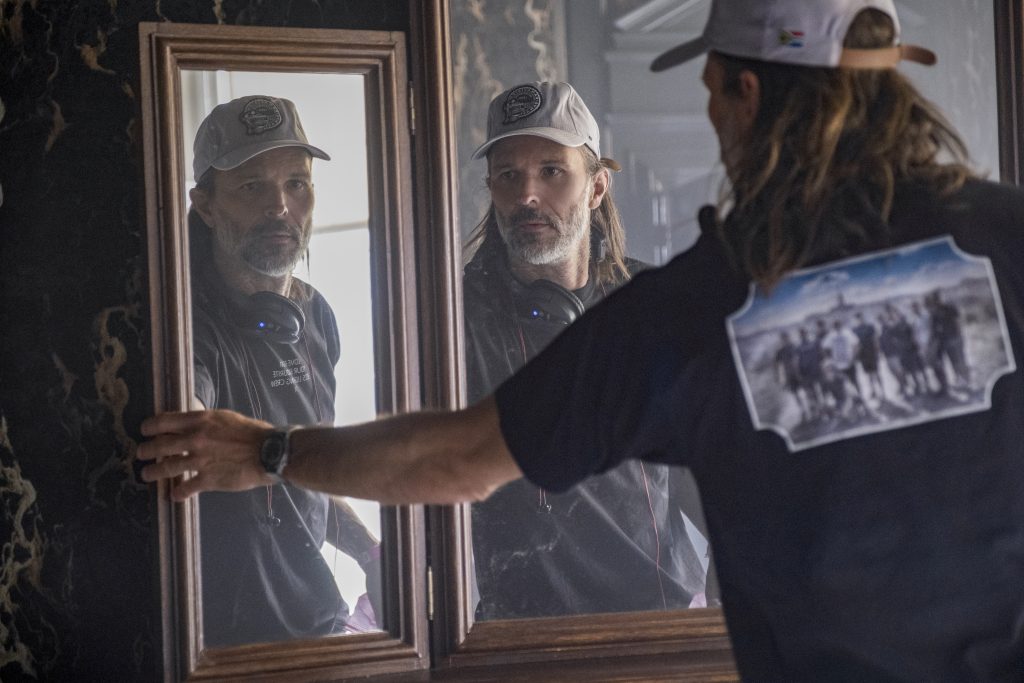
A disadvantaged Oxford student named Oliver (Barry Keoghan) works his way into an aristocratic family in Saltburn, which is a dark story of desire and revenge. The movie takes place largely at Saltburn, the family manor, where joins his posh classmate Felix (Jacob Elordi) for the summer. Felix’s family is there as well: parents Elspeth (Rosamund Pike) and James (Richard E. Grant), sister Venetia (Alison Oliver), and cousin Farleigh (Archie Madekwe).
What unfolds tests the limits of what they and society will accept.
Writer and director Emerald Fennell attended Oxford herself, which adds to the film’s verisimilitude. For her follow-up to Promising Young Woman, Fennel chose cinematographer Linus Sandgren, FSF, ASC. An Oscar-winner for La La Land, he is also the veteran of big-budget spectacles like No Time to Die and Babylon.
Sandgren spoke with Below the Line at the 31st EnergaCAMERIMAGE.
Below the Line: Was it a difficult or pleasant shift from big-budget films like No Time to Die and Babylon to a much smaller project?
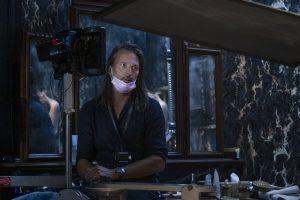
Linus Sandgren: Part of the joy of this job is to do something different each time. If I have a choice, I like not to repeat myself. I’m not saying I wouldn’t do another Bond movie, I absolutely would. But I was really happy to go from Babylon, which was in ‘Scope and had epic images, to something that was meant to be very intimate.
Saltburn had themes I haven’t really explored very much before. More sexual, more satirical, a dark and vampiresque story. It was a challenge that excited me. Also, it was a brilliant script that was written in a very visual style. The way Emerald described many scenes, she had a strong voice.
And it was fun because it becomes a challenge to do what I do. Every time you make a film, you feel you know more and more how to do things, right? So I know exactly how to do certain things, but I need to wash that out of my head in order to be respectful to a new project. I want to feel like it’s a blank page, like I don’t know anything.
I love film, I love celluloid, but at the same time, I don’t want to be judgmental or prejudiced. I don’t want to take my previous experience to a new project. Rather, start with the script, the vision from the director, and create from there a visual language about themes and metaphors.
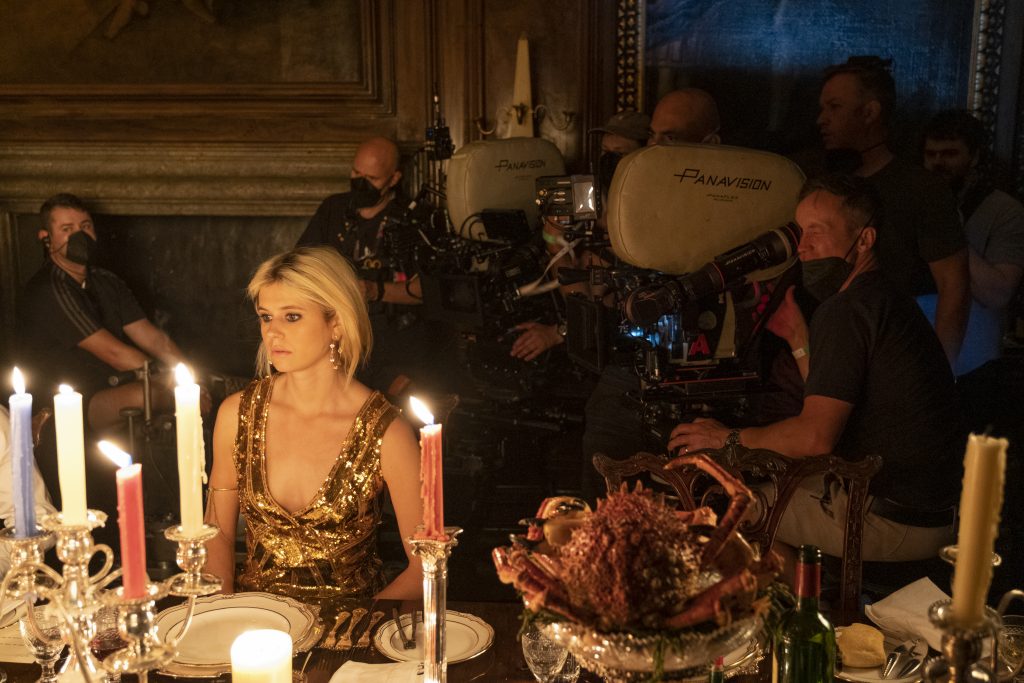
BTL: Saltburn is quite a different project from Fennell’s previous film, Promising Young Woman, a bright, shiny, widescreen film. Did you two discuss the shift?
Sandgren: Emerald and I didn’t talk about Promising Young Woman, but I think she wanted it to look glossy and bright because it’s a really dark story.
I think the core of her vision is desire. What is the worst thing that could happen to most people? To find out that they’re normal, mundane, not extraordinary. They want stuff, for whatever reason, and they can’t have it. So Saltburn is about how much Oliver desires this family, wants to become Felix himself.
The more we talked about it, the more we realized that he is basically like a vampire. And that the family he aspires to, they’re vampires as well, feeding on the people around them.
In the script, and with Barry’s acting, you understand more and more as you open up the box that he’s kind of a psychopath. But at the same time, Emerald really cares for his character. She wants you to have conflicted feelings for him.
These ideas then start to create visuals and metaphors. When we’re making the film, that is how we show the emotions working between them. Sexual connections between Oliver and the mother, between Oliver and the sister, between the brother and whomever. They’re all sort of interconnected. But it’s also hate and kind of an admiration and a desire that isn’t sexual.
The tension Emerald creates in scenes, like when Venetia is talking to Oliver and basically just outs him, right? When she calls him a moth, I feel she knows he has just killed someone. At the same time, Emerald puts in this sexual tension. You feel as a viewer, “Where do I draw the line?”
Emerald wants that, she wants Saltburn to be voyeuristic in a way. She thought it should be a doll house that we look into. Not dramatized like Babylon, where my job was to make sure the audience really understood the mood of a scene.
Here it was more like, let’s make it a painting, a classical or German Expressionist painting, where Oliver is creeping around behind Venetia and she kind of likes it. That’s not acceptable to everyone.
Baroque paintings can sort of represent how Emerald works. Those paintings depict things that are hard to look at, a beheading or a killing. At the same time, they were romantic and beautiful. You can stand before them in a museum and admire them, but they also turn your stomach.
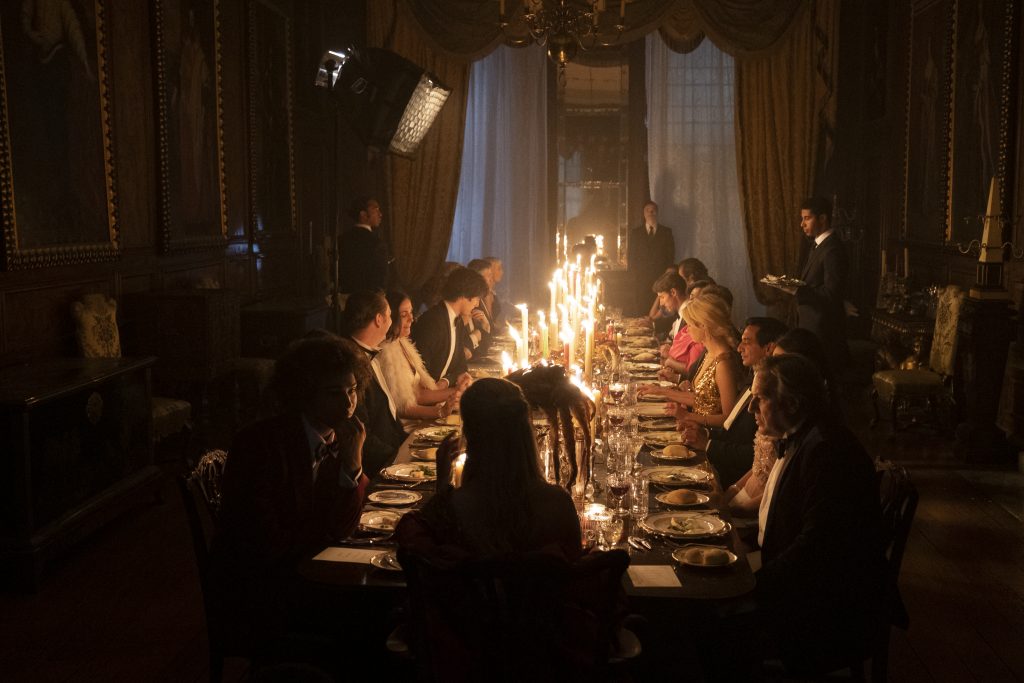
BTL: You’re depicting scenes or visuals where the viewer doesn’t know where to “draw the line”. When you’re reading the script, do you have to decide how you feel about the characters? And does that affect how you portray them?
Sandgren: It’s kind of yes and no, because the first time I read the script, it was like a page-turner. Oliver asks a question right at the start: “Was I in love with him or not?” Then you see him as nerdy, wanting to befriend Felix. Why? And there’s this sexual tension where they might be a little bit in love with each other.
It was also a very visual script. Like the scene in the bathtub, when Oliver leans over the drain: Emerald actually described how he comes into frame. It’s a disturbing visual, one that challenged me, I didn’t know what to think about it. But then I understood how it could be erotic for him, how it was like the desire in a vampire to suck blood, desire that can be seen as sexual.
BTL: You’re composing a disturbing image, but the viewer still relates to Oliver. The way you frame him makes us feel sorry for him. How’d you accomplish that?
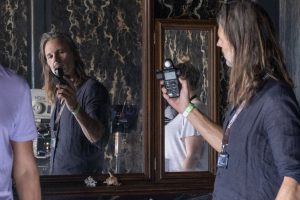
Sandgren: There are two ways to approach a situation like this. One is, what if you step back? It’s something I talked about with Damien for First Man. In La La Land, we would fly the camera in front of Ryan and Emma and see that they’re looking at each other. That felt intimate. They looked really tight into the lens, like when she falls in love with him by the piano.
There you are really aware of the camera. The camera is the audience, and we’re being taken on a ride. Similar to the camera in the Bond movie.
But in First Man, we wanted it to feel more documentary. There’s an especially emotional scene between Neil Armstrong and his wife Janet. If I were making a documentary, and the subjects were having a fight, I wouldn’t sit right next to them with the camera. Out of respect, I’d sit to the side. If I’m behind you or to your side, I can actually look at you without having eye contact. We improvised a lot on First Man, but I would say, I’m going to be here, see them in profile, and let the B camera find another angle to catch the blinking eye, the tears, whatever. The idea is to be absolutely responsive to what emotions you want to convey.
So the second approach is the profile. We impregnate the difficult images with an aesthetic, an appealing lighting scheme, for example. And then we shoot the character in profile. So in the bathtub, at the grave, Oliver is in profile. That way we don’t have eye contact with him. In those cases you can watch the scenes calmly. You’re not being disturbed by his face. Because if we were in close-up, it would have been much harder to watch those scenes.
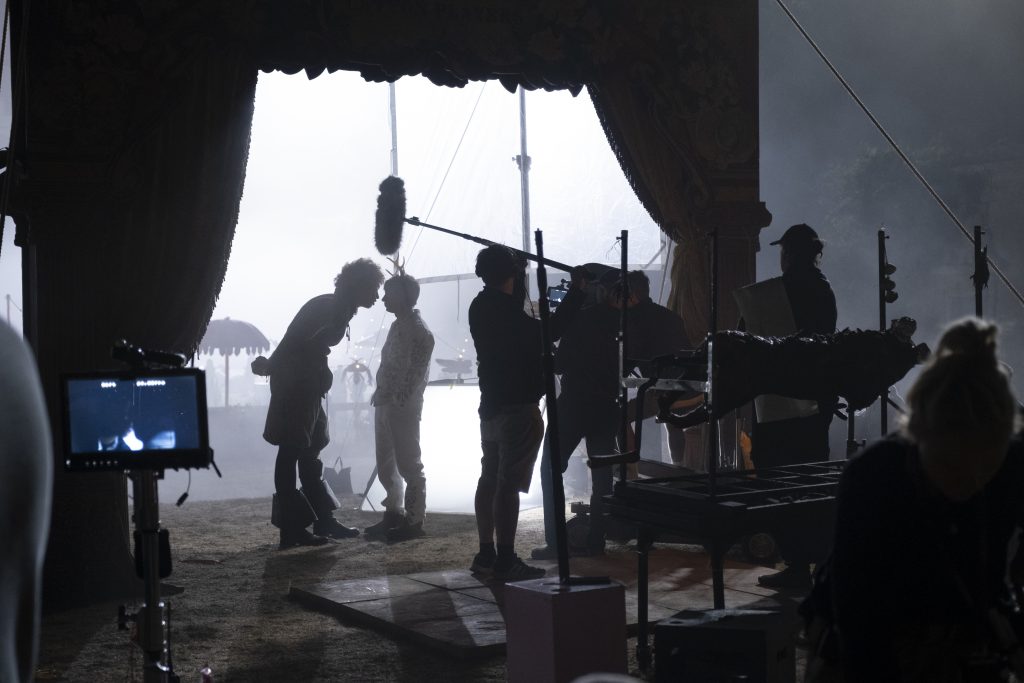
BTL: So you let the viewer decide instead of making it like, “Look at this monster.”
Sandgren: At the same time, Barry is so emotional on the grave. He’s crying. When we shot that I felt we didn’t need any other coverage, because he was so vulnerable lying on the grave. He’s crying, really sad, and then at the same time, he gets sexual. It’s weird. You realize again that he’s a psychopath. That’s when viewers have to decide: how much sympathy can you have for the devil?
I feel that the end of the film, you may understand him or, better, sympathize with him. But, at the same time, be disgusted by him. It’s up to you. We’re not trying to persuade you either way. We’re more like: this is for you to watch. We give you both the beauty and the ugliness at the same time. That’s something Emerald said before we even started, that she likes to describe beauty and ugliness at the same time.
BTL: You’ve described your visual approach, how to use profiles, but you haven’t explained why you shot this in the Academy aspect ratio.
Sandgren: I think it’s more expressive than 1.85. In general, 2.40 is also more expressive. But here it was more about painterly compositions being more interesting in 1.33. When you shoot close-ups in 1.33, a single is one face. But in 2.40, you see more than the face, you see other things beyond. So 1.33 would give us more claustrophobic close-ups.
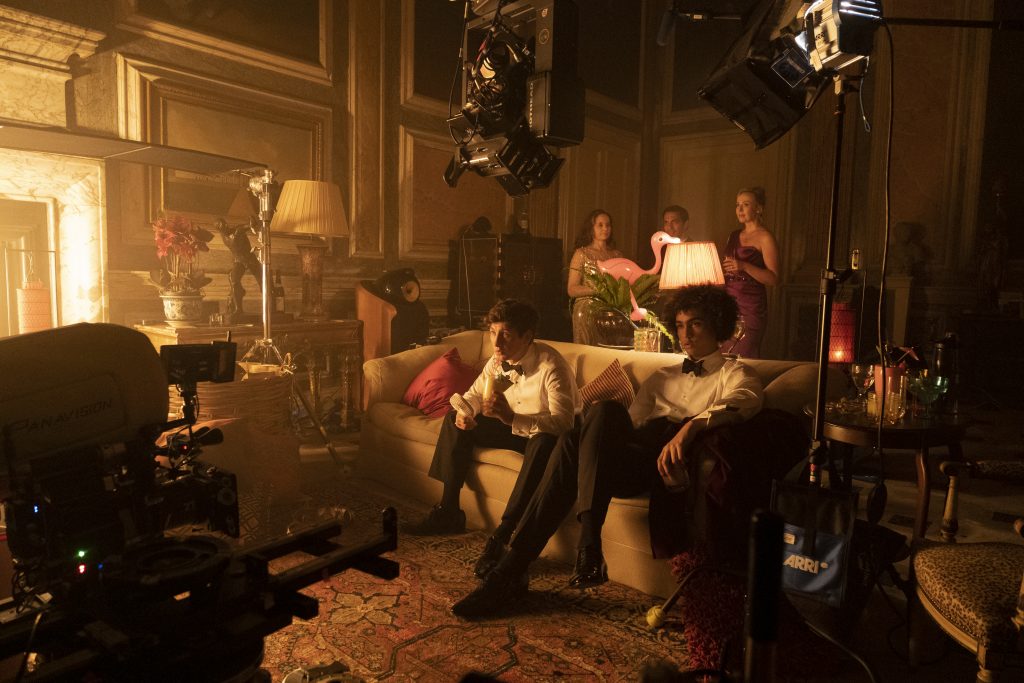
BTL: What makes 1.33 more expressive than 1.85?
Sandgren: You might have said the opposite 25 or 30 years ago, because then everything was 4:3 on TVs. Now 16:9 is sort of a standard.
But if you look at how you compose a silent film versus a film in 2.40, it feels different. A full body in 1.33, you feel closer. But in 2.40, if you’re keeping a common top and bottom, you feel farther away.
Take a still from Saltburn of Oliver in a field. The 1.33 frame has isolated him from the landscape, it draws the focus to him. If you saw what was on either side of him, it would have a different impact.
Films with lots of characters, 2.40 is usually nice, because you have more space to see in midshots. But if you want to explore single-character storytelling, 1.33 puts you very much with him.
On a more practical level, the Saltburn house itself is a very square format. The rooms too. 1.33 felt appropriate. Nosferatu, silent films, that kind of imagery was where our heart was.
Saltburn is available to stream on Amazon Prime on December 22nd.





